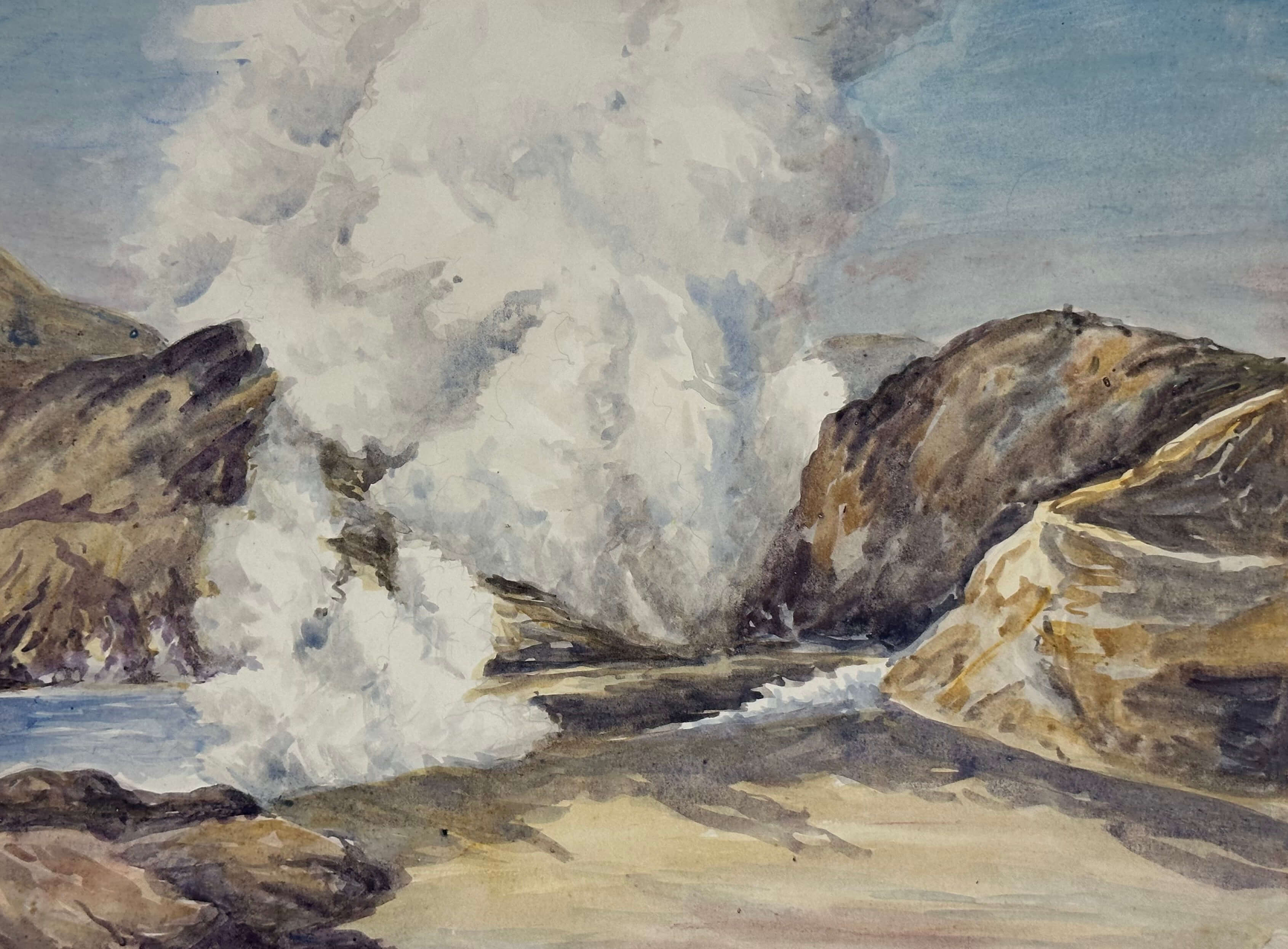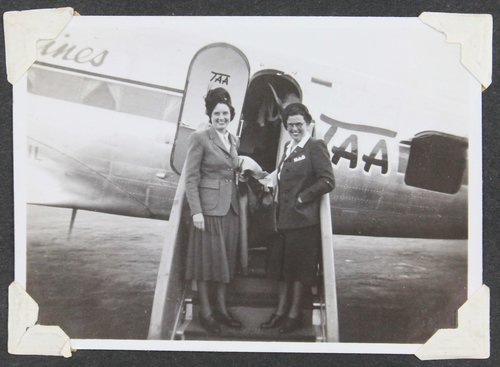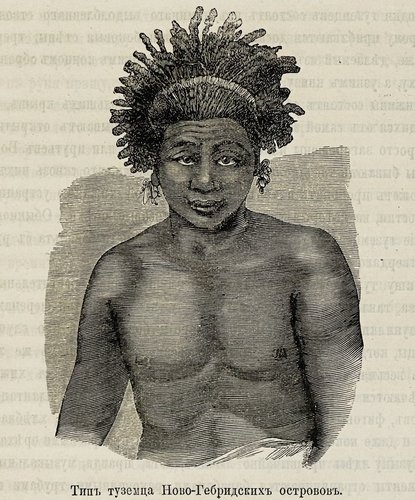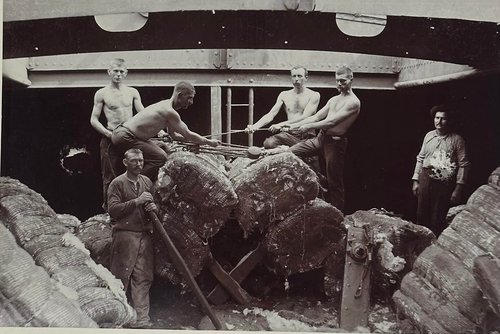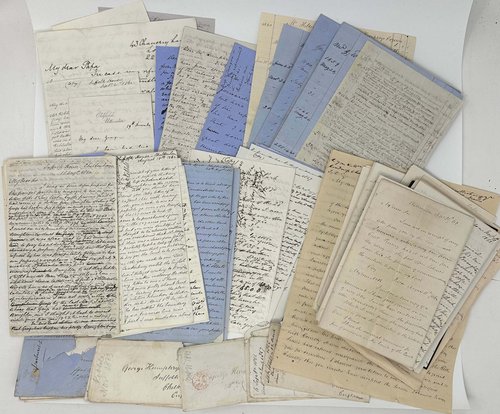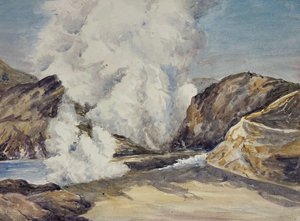
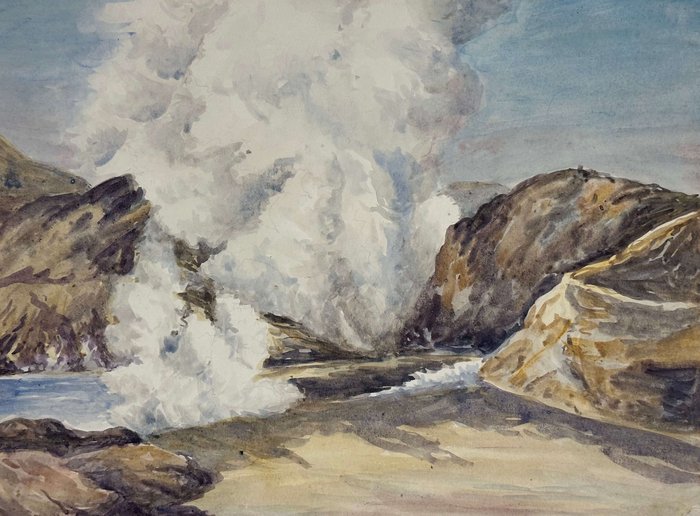
#MC35
Ca. late 1900s
A loose watercolour, ca. 28x38 cm (11x15 in). Needle holes in the corners after being mounted, mount residue on verso, otherwise a very good watercolour.
Attractive original watercolour view of a volcanic eruption in the Waimangu Rift Valley of New Zealand’s North Island. The artist was one “Lucy Burton” – possibly a relative of Rev. John Wear Burton (1875-1970), a noted Methodist minister from New Zealand who served as a missionary in Fiji (1902-1911) and later worked for the Y.M.C.A and Methodist church in Australia and New Zealand.
The watercolour, dating back to the late 1900s, depicts a volcanic eruption in the Waimangu Volcanic Rift Valley – a unique natural site created on June 10, 1886, after the violent eruption of Mount Tarawera, which irreversibly changed Lake Rotorua and its vicinity and destroyed famous Pink and White Terraces. The scene possibly focuses on the Waimangu Geyser, which actively erupted in the 1900s and went extinct in 1908. At the time, it erupted to the height of 1500 feet (460 meters), being then the most powerful geyser in the world. Note the bare slopes of the surrounding hills, which are not yet covered by vegetation (lush and overgrown today). Overall, it is a beautiful watercolour that shows the state of the Waimangu Rift Valley in the 1900s.
John Wear Burton graduated from Prince Alfred Theological College (Auckland), Canterbury College (University of New Zealand), and the University of Melbourne. He served as a missionary in Fiji (1902-1911), Conference Foreign Mission Secretary (1914-24), Chief Religious Work Director with the Australian Y.M.C.A. (1918-1920), editor of “Missionary Review” (since 1922), President of the Methodist Conference of New South Wales, &c. (see more: Who is Who in Australia, 1938, pp. 103-104; Australian Dictionary of Biography, Vol. 7, 1979).

